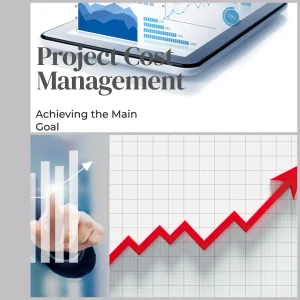I. Introduction
Hello, fellow project management enthusiasts! Today, we’re going to explore the exciting world of Project Portfolio Management (PPM). Whether you’re an experienced project manager or just starting out in the field, understanding PPM can make a significant difference in how you navigate the complexities of managing multiple projects and achieving organizational goals.
So, what exactly is Project Portfolio Management? In a nutshell, PPM is the centralized management of multiple projects to ensure they align with an organization’s strategic objectives. It’s like being the conductor of an orchestra, making sure each instrument (or project) is playing its part to create a harmonious symphony that leads to success. By practicing effective PPM, organizations can make better decisions about which projects to prioritize, allocate resources more efficiently, and ultimately drive better outcomes.
Now, you might be wondering, “Why should I care about PPM?” The truth is, in today’s fast-paced business world, organizations need to be agile and adaptable in order to succeed. PPM is a powerful tool that can help organizations stay ahead of the curve by ensuring that they are focusing on the right projects at the right time. This, in turn, allows them to maximize their return on investment and achieve their strategic objectives.
That’s where this blog post comes in! Our goal is to provide you with a comprehensive guide on how to achieve success with Project Portfolio Management. We’ll walk you through the seven essential steps of PPM, offering detailed guidance on each phase and sharing best practices and practical tips for effective portfolio management. So, without further ado, let’s dive into the world of PPM and discover how you can become a master of this vital discipline.
II. Step 1: Aligning Projects with Organizational Strategy
Welcome to the first step on our journey towards mastering Project Portfolio Management! As we embark on this adventure, it’s essential to remember that PPM is all about aligning projects with the organization’s strategic objectives. You see, just like a skilled sailor navigating treacherous waters, a project portfolio manager must chart a course that ensures the organization reaches its desired destination.
A. Understanding the organization’s strategic objectives
To kick things off, you’ll need to develop a deep understanding of your organization’s strategic objectives. These objectives are like the North Star, guiding your PPM efforts and providing a clear direction for your project selection and prioritization. Take the time to familiarize yourself with your organization’s mission, vision, and long-term goals. Consider meeting with key stakeholders to gain insights and clarify any ambiguities. Trust me, the more you know, the better equipped you’ll be to make informed decisions that drive organizational success.
B. Identifying the right projects to support these objectives
Once you have a clear understanding of your organization’s strategic objectives, it’s time to identify the projects that can help achieve those goals. This can be a bit like panning for gold – you’ll need to sift through numerous project ideas to uncover the true nuggets of value. To help with this process, consider using techniques like brainstorming sessions, stakeholder interviews, and market research. Remember, the key here is to find projects that offer the best potential for achieving your organization’s objectives.
C. Prioritizing projects based on strategic alignment
Now that you’ve identified a set of potential projects, it’s time to prioritize them based on their alignment with your organization’s strategic objectives. This is a crucial step, as it ensures that your organization focuses on the projects that will deliver the most significant impact. Develop a scoring system that takes into account factors like expected return on investment, strategic fit, and risk. By assigning scores to each project based on these criteria, you’ll be able to create a prioritized list of projects that can guide your PPM efforts.
There you have it, folks – the first step towards achieving success with Project Portfolio Management! By aligning your projects with your organization’s strategic objectives, you’ll be well on your way to creating a project portfolio that delivers real value. Stay tuned for the next step, where we’ll delve into the world of establishing a PPM framework.
III. Step 2: Establishing a Project Portfolio Management Framework
Congratulations on completing the first step in our PPM journey! With a solid understanding of your organization’s strategic objectives and a prioritized list of projects, you’re now ready to tackle the next challenge: establishing a Project Portfolio Management framework. This is the foundation upon which your PPM efforts will be built, so let’s get started and lay the groundwork for success!
A. Defining a PPM process
Think of your PPM framework as the operating system that guides your portfolio management efforts. To create this framework, you’ll need to define a clear PPM process that outlines the steps and stages involved in managing your project portfolio. Consider creating a visual representation of this process – like a flowchart or a roadmap – to ensure that everyone involved has a clear understanding of the path to success. Your PPM process should be flexible enough to adapt to your organization’s unique needs, while still providing a structured approach to decision-making and resource allocation.
B. Selecting the right tools and software for PPM
As the saying goes, “a craftsman is only as good as his tools.” The same applies to PPM. To effectively manage your project portfolio, you’ll need to equip yourself with the right tools and software that enable you to track, analyze, and report on project performance. Take the time to evaluate various PPM software solutions and choose the one that best fits your organization’s requirements. Features to look for include project prioritization, resource allocation, risk management, and reporting capabilities. With the right PPM software in your arsenal, you’ll be well-equipped to streamline your processes and make data-driven decisions.
C. Setting up a Project Portfolio Management Office (PPMO)
To ensure your PPM efforts have the support and resources they need, consider establishing a dedicated Project Portfolio Management Office (PPMO). A PPMO serves as the central hub for all things related to PPM within your organization, providing guidance, oversight, and expertise. It’s like your very own PPM command center! By setting up a PPMO, you can create a culture of excellence and continuous improvement, ensuring that your organization reaps the full benefits of effective portfolio management.
And there you have it – the second step towards PPM mastery! By establishing a robust PPM framework, you’re laying the foundation for efficient and effective project portfolio management. With a clear process, the right tools, and a dedicated PPMO in place, you’re well on your way to achieving success with PPM. Keep up the momentum as we move on to the next step: evaluating and selecting projects for your portfolio. Onward and upward!
IV. Step 3: Evaluating and Selecting Projects
Bravo! You’ve successfully aligned your projects with your organization’s strategic objectives and established a solid PPM framework. Now, it’s time for the next crucial step in our PPM adventure: evaluating and selecting the projects that will make it into your portfolio. This step is like assembling your dream team, handpicking the best players (or in our case, projects) to help you achieve victory. Let’s dive in and explore how to choose the winning projects for your portfolio!
A. Establishing project evaluation criteria
First things first, you’ll need to establish clear criteria to evaluate the potential projects vying for a spot in your portfolio. These criteria should be directly linked to your organization’s strategic objectives and consider factors such as financial return, risk, resource requirements, and potential impact. By defining these criteria upfront, you’ll create a consistent and objective method for assessing each project, ensuring that your selections are based on what truly matters to your organization.
B. Scoring projects based on these criteria
With your evaluation criteria in place, it’s time to score each potential project based on how well it meets those criteria. This is where things can get a bit like a reality TV competition, as you pit the projects against one another to see which ones truly deserve a spot in your portfolio. Create a scoring system that assigns a numerical value to each criterion, and then use this system to rate each project. Be as objective as possible during this process, relying on data and quantifiable metrics to guide your decisions.
C. Selecting the best projects for the portfolio
The moment of truth has arrived! With your projects scored and ranked, it’s time to select the ones that will make the cut. Consider the overall balance of your portfolio, ensuring that it includes a mix of projects that address various strategic objectives, risk levels, and resource requirements. It’s essential to strike the right balance between high-risk, high-reward projects and more conservative, lower-risk initiatives to optimize your portfolio’s overall performance.
And there you have it – step three of our PPM journey is complete! By evaluating and selecting projects based on a consistent set of criteria, you’re setting your portfolio up for success and ensuring that your organization’s resources are directed towards the most valuable initiatives.
V. Step 4: Balancing the Portfolio
Kudos to you for successfully navigating the first three steps of our PPM journey! With a well-aligned project selection and a solid PPM framework in place, it’s time for the next challenge: balancing your project portfolio. Think of this step as fine-tuning your PPM symphony, ensuring that each project contributes harmoniously to the overall performance. Ready to strike the right chord? Let’s dive in!
A. Assessing portfolio risk and reward
The first step in balancing your portfolio is assessing the overall risk and reward associated with each project. Just like a savvy investor, you’ll want to strike the perfect balance between high-risk, high-reward projects and those with a lower risk profile. To do this, analyze each project’s potential return on investment, as well as the risks involved, such as financial, operational, or market risks. This assessment will help you make informed decisions about which projects to pursue and how to allocate resources effectively.
B. Balancing resource allocation
Speaking of resources, one of the most critical aspects of balancing your project portfolio is ensuring that you’re allocating resources effectively. This includes not only financial resources but also human capital, time, and even equipment. To optimize resource allocation, take a close look at each project’s requirements and consider factors such as project timelines, dependencies, and resource constraints. Be prepared to make tough decisions, such as delaying or even canceling projects if necessary, to ensure that your resources are deployed where they’ll have the most significant impact.
C. Ensuring diversification of projects
The final piece of the balancing puzzle is diversification. Just as investors diversify their financial portfolios to spread risk, you’ll want to ensure that your project portfolio includes a mix of projects that address various strategic objectives, industries, and technologies. This diversification helps to spread risk across your portfolio and provides a buffer against potential setbacks. Remember, variety is the spice of life – and project portfolios!
And there you have it – step four of our PPM odyssey is complete! By balancing your portfolio in terms of risk, reward, resource allocation, and diversification, you’re setting the stage for a harmonious and high-performing project portfolio. With your portfolio fine-tuned to perfection, you’re ready to take on the next step: monitoring and controlling your portfolio’s performance.
VI. Step 5: Monitoring and Controlling the Portfolio
Give yourself a pat on the back! You’ve successfully aligned, selected, and balanced your project portfolio. But our PPM journey doesn’t end here – now it’s time for the crucial task of monitoring and controlling your portfolio’s performance. Think of this step as your PPM fitness tracker, helping you keep a close eye on your portfolio’s health and ensuring it stays on track to achieve its goals. Ready to flex those monitoring muscles? Let’s get started!
A. Defining Key Performance Indicators (KPIs)
The first step in monitoring and controlling your portfolio is to define the Key Performance Indicators (KPIs) that will help you gauge its performance. These KPIs should be directly tied to your organization’s strategic objectives and provide a clear, quantifiable measure of success. Examples of KPIs might include project completion rates, return on investment, resource utilization, or stakeholder satisfaction. By establishing KPIs upfront, you’ll have a clear set of metrics to track and assess your portfolio’s progress.
B. Regularly reviewing project progress and performance
With your KPIs in place, it’s time to regularly review your project progress and performance. Just like stepping on the scale during a weight loss journey, these regular check-ins are essential to ensure your portfolio stays on track and headed in the right direction. Schedule periodic portfolio review meetings with your team and stakeholders to discuss project status, identify potential risks or roadblocks, and celebrate milestones and successes. These meetings will keep everyone on the same page and enable you to address any issues proactively.
C. Adjusting the portfolio as needed
As the old saying goes, “change is the only constant.” In the ever-evolving world of PPM, you’ll need to be prepared to adjust your portfolio as needed to address changing circumstances, priorities, or resources. This might involve reallocating resources, adjusting project timelines, or even canceling or adding projects to your portfolio. By staying flexible and adaptable, you’ll ensure that your portfolio remains agile and responsive to your organization’s needs.
And there you have it – step five of our PPM journey complete! By monitoring and controlling your portfolio’s performance, you’ll keep it on track to achieve its strategic objectives and ensure that your organization reaps the full benefits of your PPM efforts. With your eyes on the prize, you’re ready for the next step: optimizing your portfolio’s performance. Keep up the fantastic work!
VII. Step 6: Optimizing Portfolio Performance
Wow, time flies when you’re on a PPM adventure! You’ve made it to step six – optimizing your project portfolio’s performance. This step is like the cherry on top of your PPM sundae, ensuring that you’re squeezing every last drop of value from your projects and resources. Ready to take your portfolio’s performance to the next level? Let’s dive in!
A. Identifying areas for improvement
To optimize your portfolio’s performance, start by identifying areas where improvements can be made. Review your KPIs, project progress reports, and stakeholder feedback to pinpoint potential bottlenecks, inefficiencies, or underperforming projects. Remember, the key here is to focus on continuous improvement – be proactive in seeking out opportunities to enhance your portfolio’s performance and maximize its impact.
B. Implementing best practices and lessons learned
Once you’ve identified areas for improvement, look for best practices and lessons learned that can help you address these challenges. This might involve researching industry trends, attending PPM conferences, or tapping into the expertise of your peers and colleagues. The PPM community is a treasure trove of knowledge – don’t be afraid to seek out advice and learn from the experiences of others. By implementing these best practices and lessons learned, you’ll be well on your way to optimizing your portfolio’s performance.
C. Continuously refining and adjusting your PPM processes
The final piece of the optimization puzzle is to continuously refine and adjust your PPM processes. As your organization grows and evolves, your PPM approach should evolve along with it. This might involve updating your project evaluation criteria, adjusting your resource allocation strategies, or even adopting new PPM tools and software. By staying agile and open to change, you’ll ensure that your PPM efforts remain aligned with your organization’s needs and continue to deliver maximum value.
Congratulations – you’ve completed step six of our PPM journey! By optimizing your portfolio’s performance, you’re ensuring that your PPM efforts remain agile, adaptable, and focused on delivering the highest possible value to your organization. With your portfolio performing at its peak, you’re ready to tackle the final step of our adventure: reviewing and evaluating your PPM success.
VIII. Step 7: Communicating Portfolio Results and Value
Here we are, friends! The final step of our PPM journey: communicating your portfolio results and value. This is your chance to showcase the fruits of your labor and demonstrate the incredible impact your PPM efforts have had on your organization. Ready to put your PPM success story in the spotlight? Let’s get started!
A. Reporting project and portfolio outcomes
The first step in communicating your portfolio results is to create clear and concise reports that highlight your project and portfolio outcomes. These reports should showcase the progress and achievements of each project, as well as the overall performance of your portfolio. Consider using visuals like charts, graphs, and infographics to make the data more digestible and engaging. Remember, the goal is to paint a compelling picture of your PPM success and ensure that your stakeholders understand the value your projects have delivered.
B. Demonstrating the value of PPM to stakeholders
With your reports in hand, it’s time to demonstrate the value of your PPM efforts to your stakeholders. This is your chance to show how your portfolio management has contributed to your organization’s strategic objectives, as well as any financial, operational, or competitive advantages it has helped to secure. Be prepared to share specific examples and success stories, as well as any lessons learned along the way. By effectively communicating the value of your PPM efforts, you’ll not only reinforce the importance of portfolio management but also help to secure ongoing support and buy-in from your stakeholders.
C. Promoting a culture of transparency and continuous improvement
Finally, use your PPM success story as an opportunity to promote a culture of transparency and continuous improvement within your organization. Share your PPM journey openly and honestly, highlighting both the challenges you’ve faced and the triumphs you’ve achieved. Encourage your team and stakeholders to reflect on their experiences and to share their own insights and ideas for improvement. By fostering a culture of openness and collaboration, you’ll not only strengthen your PPM efforts but also help to drive your organization towards even greater success.
Congratulations – you’ve reached the end of our PPM journey! By effectively communicating your portfolio results and value, you’re showcasing the incredible impact of your PPM efforts and helping to secure ongoing support and buy-in from your stakeholders.
IX Conclusion
A. Recap of the seven essential steps
As we reach the end of our PPM adventure, let’s take a moment to recap the seven essential steps we’ve explored together:
- Aligning projects with strategic objectives
- Establishing a project portfolio management framework
- Evaluating and selecting projects
- Balancing the portfolio
- Monitoring and controlling portfolio performance
- Optimizing portfolio performance
- Communicating portfolio results and value
By following these steps, you’ve laid the foundation for effective project portfolio management and set your organization on the path to success.
B. Emphasizing the importance of PPM for organizational success
Throughout our journey, we’ve seen how crucial PPM is for driving organizational success. By aligning projects with strategic objectives, managing resources effectively, and continuously optimizing portfolio performance, you’re not only ensuring that your organization stays competitive but also fostering a culture of innovation, collaboration, and continuous improvement. In today’s fast-paced and ever-evolving business landscape, effective PPM is no longer just a nice-to-have – it’s an essential ingredient for success.
C. Encouragement for continued learning and improvement in PPM
As we bid farewell to our PPM adventure, I want to leave you with a few words of encouragement. Remember, the world of project portfolio management is constantly evolving, and there’s always more to learn and explore. Don’t be afraid to seek out new insights, best practices, and technologies that can help you elevate your PPM game. And most importantly, never stop striving for continuous improvement – both in your PPM efforts and in your own professional development.
Thank you for joining me on this incredible journey, and I wish you all the best in your future PPM endeavors.
To find out how Artificial Intelligence is changing the Project Management landscape, you have enjoy reading this article https://www.shaunstoltz.com/did-artificial-intelligence-just-change-everything-about-project-management/
Find out more about Shaun Stoltz https://www.shaunstoltz.com/about/
This post was written by an AI and reviewed/edited by a human.



